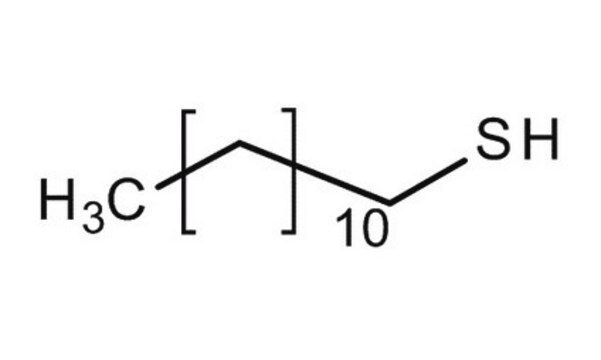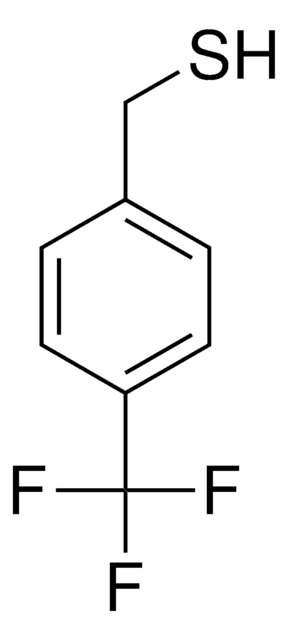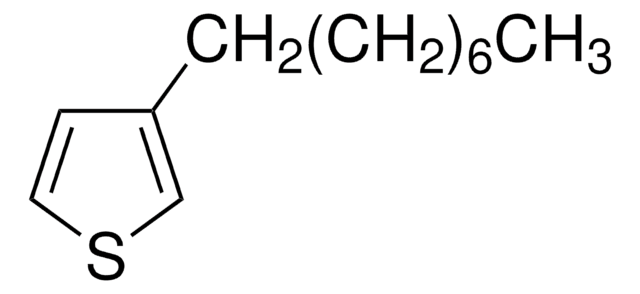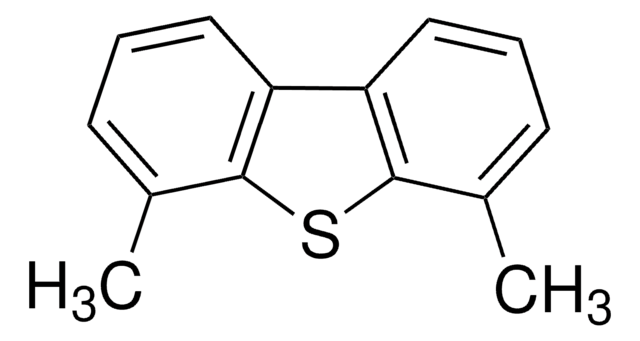All Photos(2)
About This Item
Linear Formula:
CH3(CH2)13SH
CAS Number:
Molecular Weight:
230.45
Beilstein:
1742653
EC Number:
MDL number:
UNSPSC Code:
12352103
PubChem Substance ID:
NACRES:
NA.23
Recommended Products
Assay
≥98.0% (GC)
form
liquid
refractive index
n20/D 1.461
density
0.846 g/mL at 20 °C (lit.)
SMILES string
CCCCCCCCCCCCCCS
InChI
1S/C14H30S/c1-2-3-4-5-6-7-8-9-10-11-12-13-14-15/h15H,2-14H2,1H3
InChI key
GEKDEMKPCKTKEC-UHFFFAOYSA-N
General description
1-Tetradecanethiol (TDT) is an alkanethiol used as a self-assembled monolayer (SAM) which may be used to functionalize a variety of nanoparticles. It is a hydrophobic ligand. It is highly oriented and acts as a hole-injection barrier on the nanoparticle surface.
Application
TDT is used as a self-assembled monolayer (SAM) on gold nanoparticle(AuNP) based electrodes for bi-enzymer glucose biosensors. The surface modification was done by soaking the electrodes in TDT solution.
Signal Word
Danger
Hazard Statements
Precautionary Statements
Hazard Classifications
Eye Dam. 1 - Skin Sens. 1
Storage Class Code
10 - Combustible liquids
WGK
WGK 3
Flash Point(F)
Not applicable
Flash Point(C)
Not applicable
Personal Protective Equipment
dust mask type N95 (US), Eyeshields, Gloves
Choose from one of the most recent versions:
Already Own This Product?
Find documentation for the products that you have recently purchased in the Document Library.
Customers Also Viewed
Effective Methods Controlling Cu Overburdens for Cu RDL Process.
2018 IEEE International Interconnect Technology Conference (IITC), 106-108 (2018)
A novel glucose biosensor using bi-enzyme incorporated with peptide nanotubes.
Park B, et al.
Biosensors And Bioelectronics, 38(1), 295-301 (2012)
Effective Methods Controlling Cu Overburdens for Cu RDL Process.
2018 IEEE International Interconnect Technology Conference (IITC), 106-108 (2018)
Effective Methods Controlling Cu Overburdens for Cu RDL Process.
2018 IEEE International Interconnect Technology Conference (IITC), 106-108 (2018)
Size control of aggregations via self-assembly of amphiphilic gold nanoparticles.
Jang H and Lee H
Colloids and Surfaces. A, Physicochemical and Engineering Aspects, 538, 574-582 (2018)
Our team of scientists has experience in all areas of research including Life Science, Material Science, Chemical Synthesis, Chromatography, Analytical and many others.
Contact Technical Service













